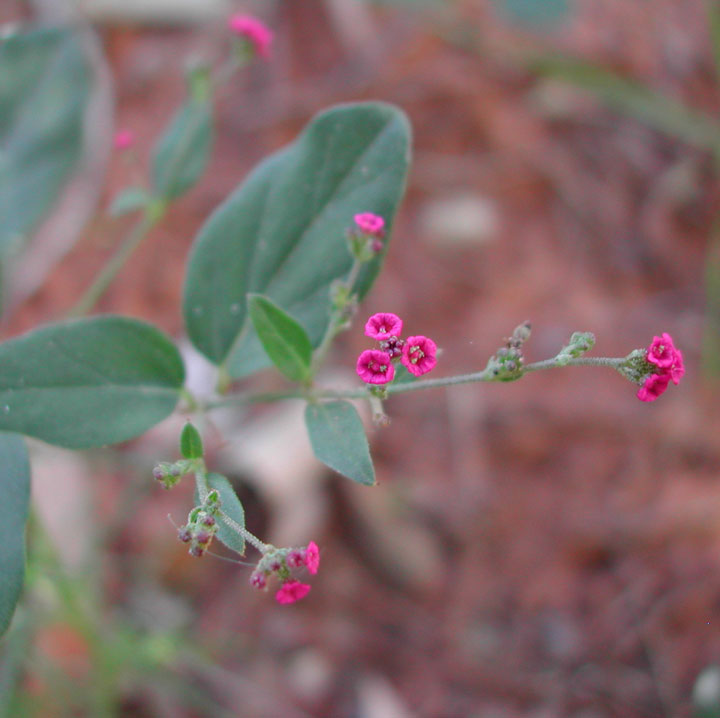|
Family: Nyctaginaceae |
Herbs, annual or perennial, sometimes suffrutescent at base, slender, often glandular, glabrous, or pubescent, from slender and soft or stout, ± woody, and ropelike or fusiform taproot. Stems procumbent, decumbent, ascending, or erect, unarmed, with or without glutinous bands on internodes. Leaves petiolate, pairs unequal in size in each pair; blade thin or thick and slightly fleshy, base symmetric to asymmetric. Inflorescences terminal and axillary, pedunculate or not clearly pedunculate because of repeated branching from distal axils, diffuse, and then usually widely cymose, paniculate, or thyrsiform, terminal portions cymose, racemose, spicate, subumbellate, umbellate, subcapitate, or capitate, rarely borne singly; bracts ± persistent and not accrescent, or deciduous, 1-3 beneath each flower, distinct, lanceolate, minute, thin, translucent. Flowers bisexual, chasmogamous; perianth radially symmetric or slightly bilaterally symmetric, campanulate or widely funnelform, constricted beyond ovaries, tube abruptly expanded to (4-)5-lobed limb; stamens 2-8, included or exserted; styles at or extending beyond anthers; stigmas peltate. Fruits fusiform, clavate, oblong-clavate, obovoid, or obpyramidal, stiffly coriaceous; ribs (3-)5, rounded, angular, or winglike, smooth, glabrous or glandular-pubescent; sulci smooth or rugose, epidermal surface smooth, papillate, or minutely pubescent. |


